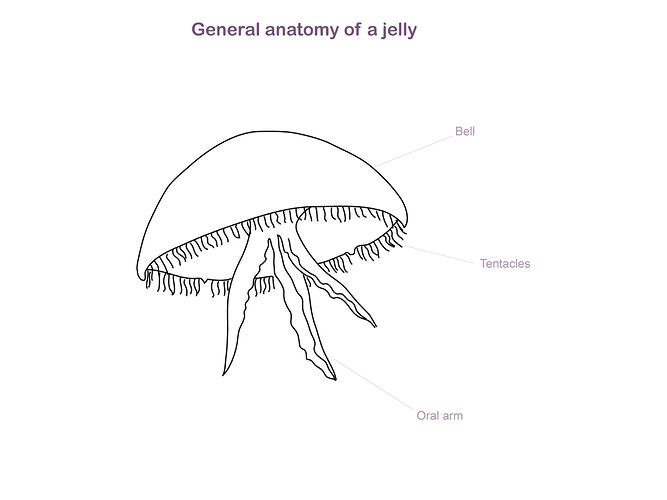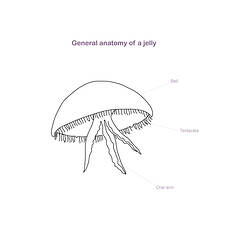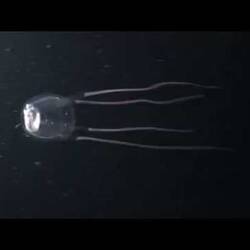General Description
A jellyfish with a rounded box-like bell. Outside surface of bell has warts with stinging cells. On each of the lower four corners of the bell is one tentacle, coloured white, pink or purple. The bell is approximately 35 mm, but the total length including the tentacles can be up to 20 cm.
Biology
While this box jellyfish can deliver a painful sting to beach swimmers, it is not deadly like its Queensland counterpart. It lives close to the bottom of the sea during the day, but moves to the surface to hunt prey at night. Southern Jimbles differentiate between the surface and the sea bottom by sensing sunlight using their eyes. They have four-rayed symmetry, a complex arrangement of nerves, muscles and sensory organs inside the bell to coordinate movement. These animals use thousands of nematocysts (venomous stinging cells) grouped along the tentacles to capture prey, which include zooplankton, larvae and small fish. The food is brought to the mouth at the base of the bell, and digested in a central stomach.
Distribution
Southern Australia.
Habitat
Over sandy areas, avoiding reef or seagrass patches.
More Information
-
Animal Type
-
Animal SubType
-
Brief Id
A jellyfish with a rounded box-like bell. Four tentacles, one attached at each corner.
-
Colours
Translucent
-
Maximum Size
35 mm
-
Habitats
-
Diet
Carnivore
-
Diet Categories
Zooplankton, Fish
-
Hazards
Can deliver a painful sting to swimmers, but is not deadly.
-
Endemicity
-
Commercial
No
-
Conservation Statuses
CITES: Not listed, FFG Threatened List: Not listed, DSE Advisory List: Not listed, IUCN Red List: Not listed
-
Taxon Name
-
Scientific Author
Haacke, 1887
-
Common Name
Box Jellyfish
-
Other Names
Jimble , Southern Sea Wasp , Southern Jimble
-
Phylum
-
Class
-
Order
-
Family
-
Genus
-
Species Name
rastoni


